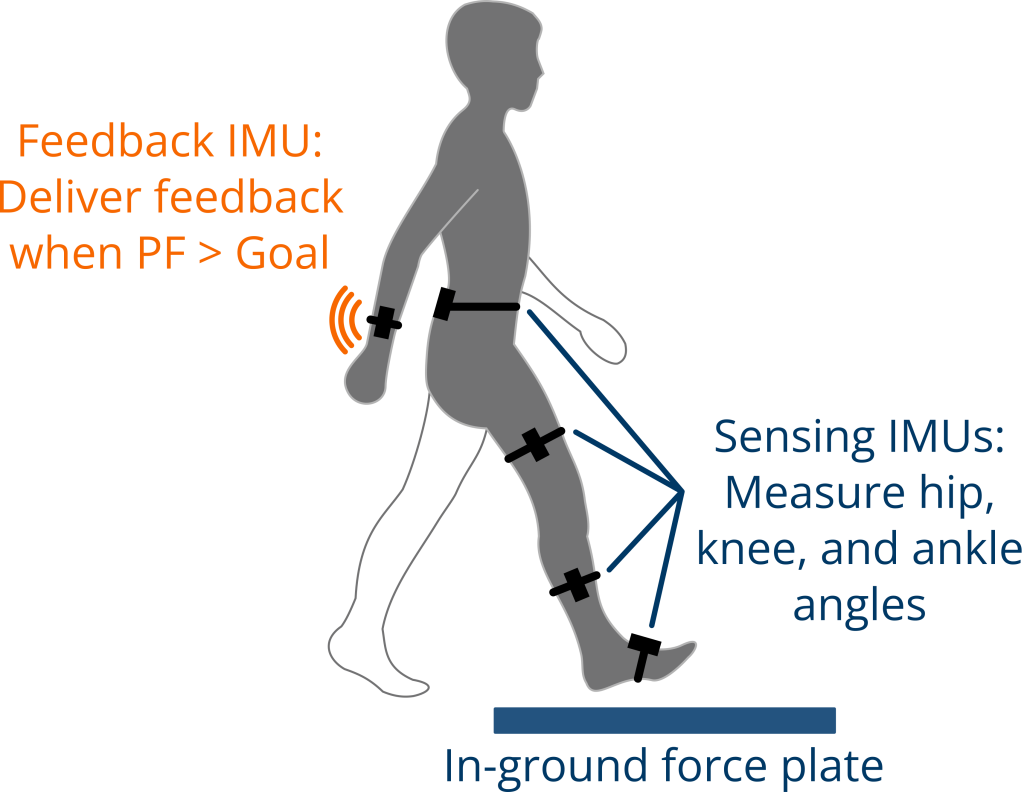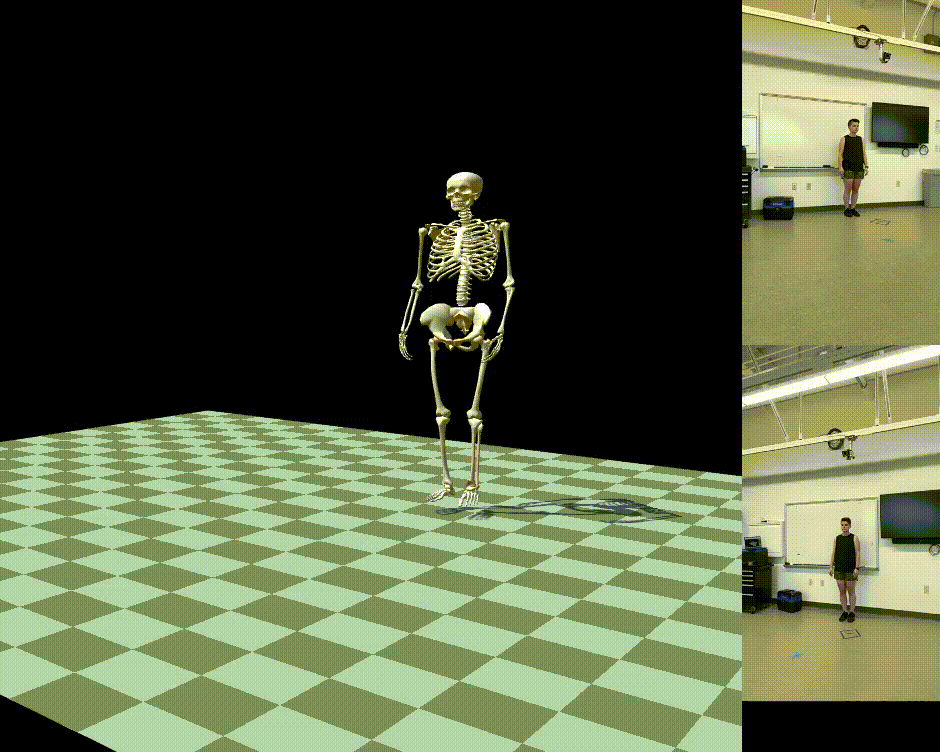Using Haptic Feedback to Improve Rehabilitation

Current gait rehabilitation methods work for some people, but not for everyone. We are exploring the use of haptic (vibration) feedback to improve key rehabilitation outcomes like walking speed and forward propulsion.
Alternatives to Optical Motion Capture

Optical motion capture (with reflective markers) is very accurate, but requires long setup times and typically confines research to the lab, where behavior and movement may differ from out in the real world.
Using technologies like inertial measurement units and video-based motion capture (e.g., OpenCap [in GIF], Kinovea), we can take motion capture outside of the lab and capture more realistic human movement.